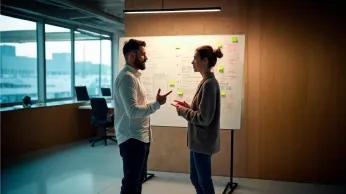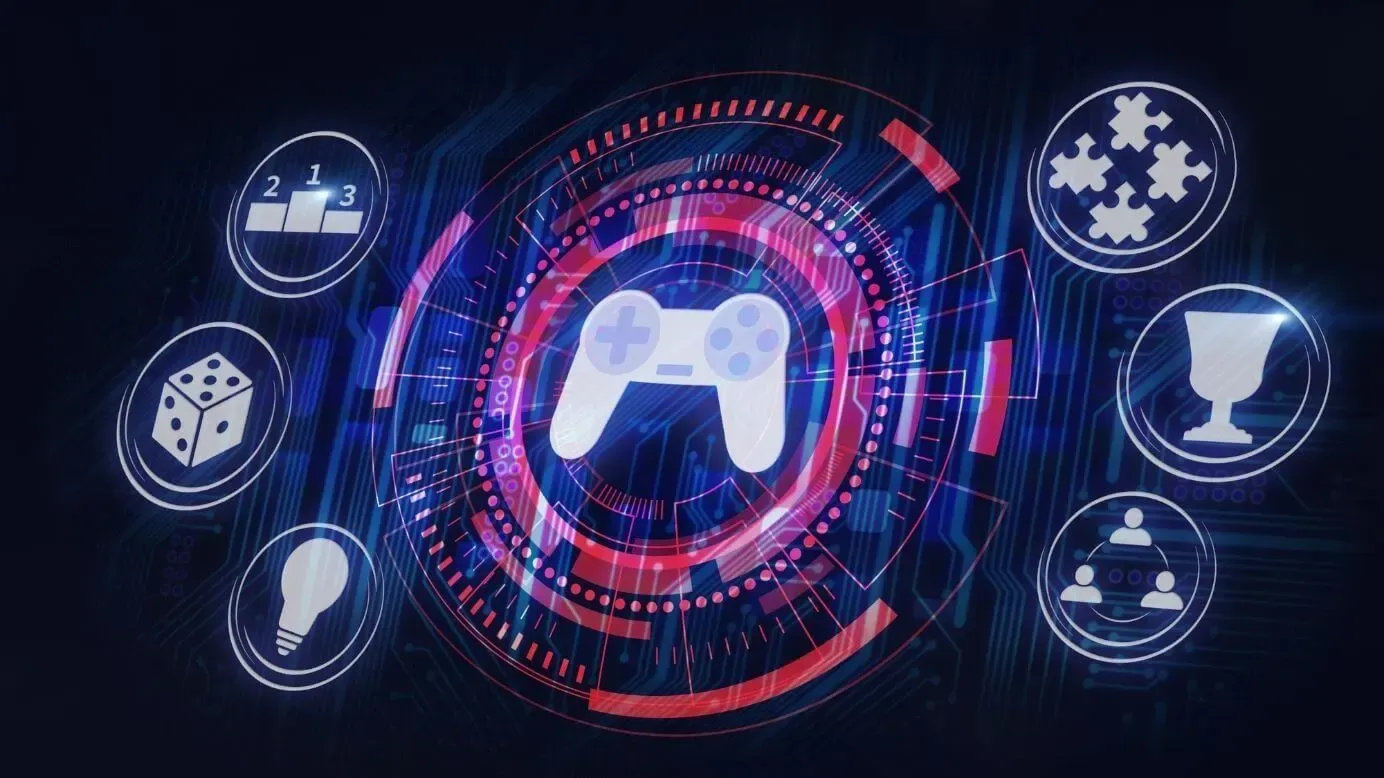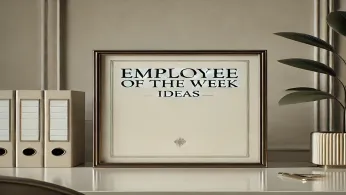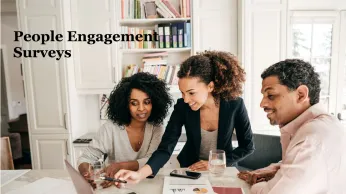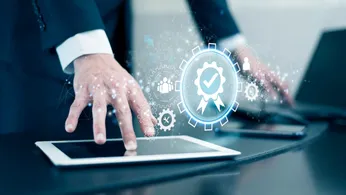How Gamification Boosts Employee Engagement and Performance
Learn how gamification for employee engagement drives motivation, improves performance, and fosters a culture of recognition, collaboration, and goal alignment.
In questa pagina
Did you know that gamified workplace initiatives can increase employee engagement, driving higher productivity and a sense of belongingness? A Forbes article has revealed that 70% of business transformation initiatives fail due to a lack of employee engagement, urging employers to focus on implementing steps for employee engagement.
One of India's largest food ordering and delivery platforms uses gamification to solve the engagement of their colossal workforce of over 2 lakh delivery partners. They gamified their delivery partners' attendance, shift completion, and delivery times using Empuls, an excellent example of how gamification improves employee engagement.
Ogni volta che i partner di consegna hanno portato a termine il compito di presenziare alla consegna per un giorno, hanno consegnato entro i tempi previsti e hanno completato i loro turni, hanno ricevuto automaticamente dei punti.
Questi punti potevano essere accumulati per acquistare un prodotto o un servizio di loro gradimento, cosa che altrimenti sarebbe stata difficile con il solo stipendio. Al sesto mese di implementazione, l'organizzazione aveva l'86% dei partner impegnati e in grado di raggiungere gli obiettivi.
Considering their operational complexity of being spread across 280+ cities, over 270 of these being tier 2 and tier 3 cities, this achievement is laudable. This reach would have been impossible if not for gamification using scalable technology. The above case is just one of the numerous applications of gamification.
Such an implementation is corroborated by research from Harvard Business School that claims that framing competition as a gain can positively impact an employee’s feeling and their willingness to find creative ways to meet their goals.
Questa tecnica è ampiamente utilizzata nel marketing, nell'innovazione, nella salute, nel crowdsourcing, nell'apprendimento, nella costruzione di comunità, nelle cause sociali e nel coinvolgimento sul posto di lavoro. Tra questi, questo articolo si concentra su come la gamification possa trasformare in modo particolare il coinvolgimento sul posto di lavoro.
Che cos'è la gamification?
Gamification involves integrating game-design elements such as points, badges, and leaderboards into non-gaming contexts to motivate and increase user engagement. In the workplace, this translates to applying these elements to tasks and processes to make them more engaging and rewarding.
1. Yu-kai Chou
Yu-kai Chou, a gamification author, and international keynote speaker tells us that gamification needs to be designed around the 'core drives' of human beings. He classifies these core drives into eight categories: a higher purpose, achievement, empowerment, ownership, social influences, scarcity, unpredictability, and avoidance.
He believes that the most enchanting of gamification designs necessarily address at least one or many of the above 'core drives'.
2. Gabe Zichermann
Gabe Zicchermann, a gamification expert and public speaker, presents an interesting narrative on the biochemistry of gamification. "Any time you challenge yourselves to do a task, it doesn't matter how big or small - and you succeed - your brain secretes a magical little bit of dopamine - which makes you feel really good.
The more you do this 'challenge - achievement - pleasure' loop, the more dopamine is secreted in your brain making you want to do it more. Thus the more you succeed, the more you want to succeed."
Which elements are essential in gamification for employee engagement?
Rajat Paharia, in his book Loyalty 3.0, describes that gamification has a few or many of the following ten elements (also known as game mechanics) to it:
- Immediate feedback: The user knows whether he is winning or losing almost immediately after his actions.
- Leaderboards: The user gets to know where he is positioned from amongst the rest of the users.
- Goals: The user gets to know where they are headed and what they need to achieve.
- Badges: The user receives badges that are shorthand for past achievements.
- Leveling up: The user is taken through ascending levels of difficulty.
- Onboarding: The user is trained well - all during the course of the gameplay itself.
- Competition: The user is competing with other players or groups.
- Collaboration: The user gets to help and take help from other users.
- Community: The user gets to belong to a community of others who have similar gaming interests.
- Points: The user accumulates points throughout the gameplay.
That said, ticking off the elements of gamification does not ensure a valid gamified solution. The author of 'Gamify,' Brian Burke warns us of how a few companies have a misconception that gamification is a magic elixir that can be used to indoctrinate masses to perform the company's bidding. Users can quickly sense poorly designed solutions and start actively avoiding them, leading them to collapse.
When should organizations implement gamification?
Organizations should consider implementing gamification when they observe low employee engagement, high turnover rates, or a lack of motivation. It's particularly effective during onboarding, training, and performance management phases.
Gamified onboarding can enhance the new employee experience by making the process more interactive and informative. Similarly, incorporating gamification into training programs can improve knowledge retention and skill development.
Progettare la gamification per il coinvolgimento dei dipendenti
Brian Burke in his books and Yu-kai Chou continually emphasizes how a gamification design needs to incorporate 'core drives' or intrinsic motivations of the user. This means the game architect needs to go beyond game mechanics and study the true motivations of the target users. Along with the business scope, the user's scope in the solution needs to be constantly evaluated.
Brian Burkes ricava le seguenti sette fasi che dovrebbero fungere da quadro di riferimento durante la progettazione della gamification, sia per gli architetti che per i dirigenti aziendali:
1. Definizione dei risultati aziendali e delle metriche di successo
Tutti gli sforzi profusi per la gamificazione di una soluzione devono necessariamente essere collegati a un obiettivo aziendale. Pertanto, il primo passo per decidere una soluzione aziendale gamificata sarà quello di determinare l'obiettivo aziendale che si sta cercando di risolvere.
'20% faster customer first response time' could be an ideal business outcome definition that includes a success metric of '20% improvement' for a typical customer service team.
2. Definire il pubblico di riferimento
Chi saranno gli utenti della soluzione gamificata? Quale sarà il loro profilo ideale? Cosa li spinge? Queste sono domande essenziali per comprendere a fondo il pubblico target. Maggiore sarà la comprensione, più la gamification risponderà alle loro esigenze principali.
Referring back to the customer service team, the target audience for gamification will typically be customer service executives. Their job designs are fairly standardized, iterative, and homogeneous. Core drives like 'higher purpose' and 'achievement,' can break this monotony and introduce higher efficiencies if captured in gamification.
3. Definizione degli obiettivi dei giocatori
L'obiettivo del giocatore deve essere un sottoinsieme dell'obiettivo aziendale e dovrebbe idealmente coincidere con almeno uno degli obiettivi principali dell'utente tipico.
Burke talks of an example of how a children's cancer treatment center gamified pain reporting by their patients. The kids are made a part of a "Pain Squad" where they pretend to be a police officer. They are then promoted from rookie to sergeant to chief as they regularly report their pain levels.
Drawing a quick inspiration, the customer service executives in our above example could be given a similar goal - to 'put out' or 'solve' a query as quickly as possible.
4. Determinazione del modello di coinvolgimento dei giocatori
Come si impegneranno gli utenti nella soluzione gamificata? Ha più senso un gioco collaborativo o competitivo? Quanto durerà? Quale forma di ricompensa verrà data? Sono domande importanti da affrontare prima della fase di progettazione.
In our example, a 'competitive' engagement model makes direct sense because the executives address customer queries individually. There are ways companies have effectively made customer service gamification collaborative under the assumption of it being impossible for a customer service executive to know ALL the answers to all possible client questions. They create teams of customer executives with mixed specializations and allow them to tackle queries together.
5. Definizione dello spazio di gioco e pianificazione del percorso
The environment the gamification is as important as the solution itself. In the context of employee solutions, it is ideal if the 'play space' is close to their CRMs and ERPs. The entire journey of the user's needs to be mapped, level by level, and challenge by challenge.
Customer Service brigadiers could be given faster-level achievements while they solve customer queries faster. There could be leaderboards showing the position of each of the brigadier's achievements and profile badges representing their positions. It is ideal if leaderboards could be reset after a final win - to democratize the opportunity to win and retry. The history of achievements should be recorded both on the profile of the user as well as a 'hall of fame'.
6. Definizione dell'economia di gioco
Cosa riceve l'utente in cambio dei suoi risultati? Come si possono effettuare ulteriori transazioni? Come vengono archiviate le registrazioni di queste transazioni? L'economia del gioco è il motore per il funzionamento di tutto questo design e la risposta alle domande critiche di cui sopra aiuta a definire il design del gioco.
Since customer service is almost always a direct component of a customer service executive's KRA, better efficiencies could be incentivized using their standard performance rewarding guidelines. Points could be used to track the progress and major milestone wins can be awarded using incentive disbursals.
7. Giocare, testare e iterare
Come per la progettazione di qualsiasi sistema, anche per la gamification è necessario aprire il ciclo di feedback e capire cosa deve essere cambiato per rendere l'esperienza dell'utente continua. Aggiornate costantemente i progetti e provate a testare nuove meccaniche di gioco che possano contribuire a una migliore adozione della soluzione.
Talk to the customer service executives one-on-one and understand the challenges they face in the gameplay. Get their feedback on each of the game design aspects. Reinvent parts of it if necessary- say, make it a collaborative gameplay from a competitive one?
Impatto della gamification sul coinvolgimento dei dipendenti
Nell'applicare la gamification, è importante capire come può influire su ciascuno dei principali fattori determinanti dell'impegno dei dipendenti, elencati di seguito, poiché l'impegno dei dipendenti è di per sé una complessa combinazione di fenomeni professionali.
Le caratteristiche individuali dei dipendenti sono considerate il più forte predittore dell'impegno dei dipendenti e, nello specifico, le caratteristiche seguenti sono importanti tra le altre:
1. Autosufficienza
This accounts for the individual's perception of how effective his/her skills will be for the organization and the perception of self-efficacy can be nurtured using gamification that incorporates 'pats on the back'. Employee engagement software like Empuls uses 'spot rewards' and 'badges' for this purpose and these have seen enormous results in both reward ROI and engagement.
2. La resilienza
Questo aspetto tiene conto della capacità di un dipendente di adattarsi rapidamente all'ambiente aziendale e culturale dell'organizzazione e questo adattamento può essere reso più fluido e veloce attraverso la gamificazione dei processi di onboarding e di formazione. Le meccaniche di gioco degli ecosistemi "collaborativi" possono aiutare i nuovi dipendenti ad adattarsi rapidamente.
3. Capacità personali
Gli attributi personali positivi, come la speranza e l'ottimismo, influiscono sul modo in cui i dipendenti si impegnano in un'organizzazione. Meccaniche di gioco come l'"Onboarding" possono essere utilizzate per rafforzare gli OKR e i ruoli lavorativi, in modo da definire molto chiaramente le aspettative del ruolo.
4. Fattori legati alla progettazione del lavoro
La progettazione del lavoro è il secondo elemento più importante per il coinvolgimento dei dipendenti e le caratteristiche che la caratterizzano sono le seguenti:
5. Feedback
Giving and receiving feedback is the most significant of all job design features and gamification can very efficiently help nurture a feedback-positive environment. Employee engagement tool and employee gamification software like Empuls use 'immediate feedback' game mechanics like 'high-fives' and '+1s' to get anonymous feedback from the other users.
I sondaggi gamificati (la compilazione di un sondaggio premia l'utente con punti), i feedback e i sondaggi sono metodi comprovati per aumentare le risposte e la partecipazione. Anche la frequenza e il tempo di risposta per compilare i feedback possono essere monitorati e gamificati.
6. Responsabilità e autonomia
La gamification può fornire soluzioni efficaci per alimentare l'empowerment e l'autonomia e creare coinvolgimento. La gamificazione delle interazioni del gruppo di lavoro e l'assegnazione di punti per prendere decisioni in modo indipendente possono essere un modo per implementare questo aspetto. I punti per le nuove idee, la scoperta di problemi, il feedback, i suggerimenti innovativi, ecc. possono innescare una maggiore autonomia lavorativa.
7. Opportunità di sviluppo
Le meccaniche di gioco "Leveling up", "Badge" e "Leaderboard" sono metodi efficaci per creare uno sviluppo continuo tra i dipendenti. Anche per le classifiche che vengono azzerate, i livelli e i badge dimostreranno i risultati ottenuti dal dipendente in passato. Il collegamento con i processi di valutazione e la pianificazione della leadership ne aumenta ulteriormente il potenziale.
8. Percezione della leadership e della gestione del supervisore diretto
Anche i supervisori possono essere il "target" della gamification. Progettare gamification che tengano traccia del tempo che un manager impiega a risolvere i problemi dei dipendenti, a rivedere i compiti, la frequenza delle interazioni con il team, l'adesione del manager alle politiche di inserimento e di benessere dei dipendenti dell'organizzazione, ecc. Le meccaniche di gioco della "competizione" e della "classifica" possono essere utilizzate per implementarle tra i manager della stessa fascia.
9. Percezione dei fattori organizzativi e di squadra
Il clima psicosociale, la comunicazione, la fiducia, ecc. che esiste all'interno dell'organizzazione è un altro fattore determinante del coinvolgimento dei dipendenti. I valori fondamentali costituiscono la base della cultura e del clima aziendale. La gamification può alimentare questi valori attraverso l'uso di meccaniche di gioco come i "badge basati sui valori".
La gamification a livello di manager può essere creata per monitorare la capacità di comunicare e diffondere gli obiettivi organizzativi a lungo e a breve termine al proprio team.
10. Interventi o attività organizzative
La gamification è ampiamente utilizzata per le attività di benessere dei dipendenti e ha dato ottimi risultati nel migliorare la forma fisica e l'efficienza generale dei dipendenti. È possibile tenere traccia dei chilometri percorsi e degli allenamenti e stilare classifiche in tempo reale.
People Combine, uno dei nostri clienti, ha gamificato le tappe dell'allenamento e ha ridotto del 50% l'assenteismo per motivi di salute. Hanno utilizzato meccaniche di gioco come "classifiche", "livellamento", "badge", "obiettivi" e "punti".
How Empuls, the employee gamification software could help?
Gamify employee rewards & recognition with badges, points, certificates, and leaderboards. Motivate employees and improve performance with a healthy competitive spirit using game mechanics.
Empuls empowers organizations to build a culture of appreciation and high performance by integrating gamification into everyday work experiences. Here's how it supports engagement:
1. Motivates with meaningful recognition
Empuls allows peers and managers to give timely and public recognition through points, badges, and social appreciation. This reinforces positive behaviors and aligns employees with company values.
2. Boosts performance through friendly competition
With gamified elements like leaderboards, challenges, and goals, Empuls fosters a healthy sense of competition. It encourages employees to give their best effort consistently and track their progress in real time.
3. Drives continuous engagement
The platform combines gamification with regular pulse surveys and feedback loops, helping leaders stay in tune with employee sentiment and take action to improve engagement levels.
4. Creates a reward-driven culture
Empuls connects performance and recognition with a powerful rewards engine, enabling employees to redeem points for a wide variety of digital gift cards and experiences — adding tangible value to their achievements.
5. Promotes team collaboration and participation
By gamifying collaboration, knowledge sharing, and participation in company initiatives, Empuls helps break silos and improve cross-functional engagement.
6. Enhances platform adoption
Gamified nudges and milestones encourage employees to use internal tools and communication platforms more actively, improving digital workplace adoption.
7. Personalized engagement journeys
With role-based challenges and milestone tracking, Empuls helps personalize each employee's journey based on their department, goals, and performance trends.
Schedule a call now to get a personalized demo!
Conclusione
La gamification può persino risolvere problemi un tempo percepiti come irrisolvibili, come quando un gruppo di giocatori di Foldit risolve in soli dieci giorni un problema biochimico rimasto irrisolto per 15 anni. Questo dimostra il potenziale della gamification immersiva. Abbiamo appena scalfito la superficie di come la gamification possa essere impiegata per migliorare il coinvolgimento.
Con gli ambienti di lavoro sempre più digitalizzati, c'è la possibilità di gamificare quasi tutti gli aspetti del lavoro. Poiché il coinvolgimento dei dipendenti riguarda tutti questi aspetti del lavoro, la gamification dovrebbe aiutare le organizzazioni a creare ambienti di lavoro altamente efficienti e coinvolgenti.


